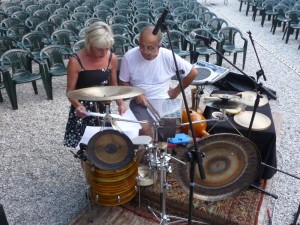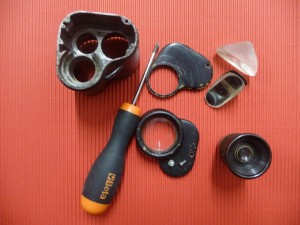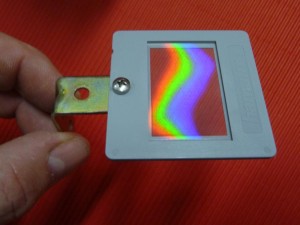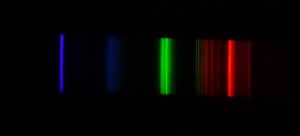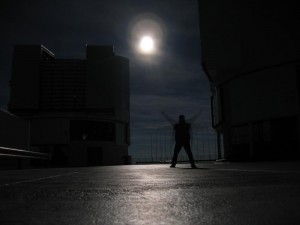Bringing the enthusiasm for astronomy to kids

A review of “The Age of Wonder” by R. Holmes
November 10, 2009
A bright optical transient in NGC300 or “how to put and end to a nice vacation”
November 17, 2009Although not among the core activities of a professional astronomer, popularizing science to the public is a fundamental task. Since a researcher is not necessarily a good communicator (you can be an excellent piano player, but you might be absolutely dull in teaching it to a kid), I believe this job is better done by a professional, who devotes all her/his efforts trying to find the right compromise between scientific rigor and making the topic appealing to the targeted public.
However, an active scientist can convey to the public her/his first hand experience which, properly shaped, I reckon can have a strong impact on the listener. She/he also acts as an (often unconscious) living example of the real possibility of becoming a scientist. So, when my professional commitments allow it, I always accept requests for public seminars in schools, theaters and small amateur clubs. Among others, last summer I gave one in my town in Italy. For the first time I did two new things: a Skype video-link to Paranal (my colleague Paul Lynam was on the other side of the ocean, in Chile) and a live spectroscopic demonstration. Being an experimental astronomer (whatever experimental here means…), I strongly believe in the power of the experiment in conveying concepts and firmly imprint them in the listener’s memory. From the feedback I got afterwards (the talk was attended by some 250 people, ranging from kids to grannies), those were the two things that mostly impressed and reached the mark. Another ingredient I make us of is interspersing the scientific talk with personal anecdotes and, more recently, adding live music performances by professionals (for instance to accompany sequences of astronomical images at the beginning/end of the presentation). I use them as “relaxing” points and they prove to be very effective, especially with kids (see Ermes Ghirardini rehearsing for “Astronomy and Emotions”, Artegna September 2009).
The presentation was attended by a teacher who, inspired by what she had seen, afterwards came to me proposing a lecture to be held in front of some 320 kids, 13 years old, at their last year of the Intermediate School. This would perfectly fit – she said – with the activities they had undertaken during the International Year of Astronomy (Galileo, the telescope, the Copernican Revolution, and so on). But, most important of all, she was asking me to convey the enthusiasm for science and research. Mmm, not an easy task with 13 year old youngsters… My fears were two-fold: i) Even admitting I would manage to capture their attention for a while, I would never be able to keep their attention for 2 hours (this is what she was proposing for the duration); ii) I would never accomplish to surprise them. With all those 3-D games and computer programs they have already seen much more than I can even imagine… However, I like challenges and I finally accepted the offer. I must say that having those concerns in mind I took the thing rather seriously and so I started
preparing the presentation and all required paraphernalia almost immediately. My first goal was be to build a better version of my SFTM spectrograph. Oh, yes, SFTM stays for Spectrograph For The Masses. Clearly, one could deliver the basics of spectroscopy using pictures taken from the Internet, without the need of screwing a single bolt. But that was exactly what I wanted to avoid. Therefore, after putting all kids to sleep (I have quite a number of them, mind you), for a number of nights I spent many hours in my improvised optical lab in the basement (much to my wife’s badly conceived disappointment). The idea was to build a simple spectrograph that would easily allow me to show in real time the spectra of different sources, to illustrate why spectroscopy is so important and why it transformed astronomy into astrophysics.
I knew I had an old Russian binocular somewhere. After finding it I quickly managed to take it apart (a
specialty I acquired when I was a kid, much to my parent’s dismay: “The only good toy is the dismounted one“. It looks like my last kid inherited this attitude, extending the concept also to things which are not necessarily toys…), to extract one of the objective lenses to be used as collimator. The next step was to get the dispersive element. In the projects you find in the Internet a piece of an old CD/DVD is used for that purpose. But I preferred to adopt a grating foil, because it has a higher dispersion and it works in transmission. You can get it online in several optical stores for a few EUR/USD. After cutting it to the proper size, mounting it in a slide frame, and screwing it on an L-shaped holder (a few cents in any hardware shop), the dispersive element is ready for use. As for the spectrograph entrance, I adopted the common two-blades solution, gluing them on a piece of cardboard. The backbone of the spectrograph is a simple
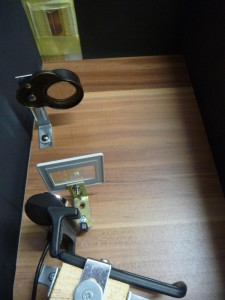
The SFTM instrument assembled. The tow-blades slit is visible at the top, while the contraption at the bottom is the webcam and its holder
piece of wood, on top of which I fixed the various components. I then placed it in an old shoe box, internally covered with black paper to avoid spurious light. But the real “+feature” of the spectrograph is its coupling to a webcam, which makes SFTM suitable for live performances. In fact, during the presentation, you can start your favorite webcam software and broadcast the real time images on the large screen. After building a simple holder for the collimator and the webcam (making use of quite a number of pieces of metal, leftovers of never ending IKEA-mounting sessions), and after going through some integration and alignment procedure, the instrument was ready for commissioning.
Although there is lots of room for improvement, the results where not bad. By the way, the whole thing gave me the chance to refresh Spectroscopy-For-Dummies. As usual in the teaching process, things become much more clear when you have a well defined target in mind. While learning, many times you tend to lie to yourself. This is dangerous when you will have to stand in front of a potentially aggressive audience, which is just looking forward to get you wrong somewhere… The machine was finally ready to go on stage. For the sources I decided to keep things simple: an incandescent light (to mimic a black body) and a compact fluorescent lamp (to simulate an emission nebula).
Spectroscopy is the key tool in astrophysics. It basically gives you two kinds of information: chemical composition/physical conditions and information about the kinematics
of the emitting material. While the first can be clearly illustrated by the two lamps, the second is not feasible with a simple laboratory experiment (you would need to move the source at very high speeds, a bit too high to achieve them in a theater ;-). So, I had to change type of waves and, of course, the next choice is acoustic waves. What I wanted to convey is why spectroscopy tells us about the radial velocity of the emitting body.
After removing a loudspeaker from an old radio, I soldered a couple of wires to connect it to a CD player. On a CD I then recorded a 440Hz sinusoidal sound (you can do this, for instance, using Audacity). After securing the loudspeaker with an extra wire (you do not want the loudspeaker to accidentally hit somebody sitting in the first row), the Ledan-Doppler-Demonstrator was ready for use. The idea is very simple. After switching on the CD player, you let the audience hear the sound,
so that they can memorize the zero-velocity frequency. Then, firmly holding the loudspeaker by the wire, you start turning it, like a lasso. This simulates, for instance, a star in a binary system as seen by a distant observer. The audience will perceive a time-varying frequency (in the 60’s there was an audio effect called Leslie, that was based on the same concept), higher when the loudspeaker moves towards the public, lower when it goes away from them. I tested at home with my kids and it seemed to work just fine (if the “orbit” has a radius of one meter and the rotation period is one second, then the frequency variation is about 8 Hz, well perceivable by the human ear).
So much for the experiments. I then took a good time to prepare the talk, with images and music. I decided to start off using a picture of myself when I had their age (and astronomy was just appearing on my horizon). I would tell them that I was fascinated by the heavens, but also that I wanted to look through a telescope, to see those wonders with my own eyes. And then explain them that early love for the skies soon became a real passion and carried with itself a dream: become an astronomer and make my own research with the biggest telescopes. I would close this introduction showing a picture of myself, taken on Paranal. A dream that finally turned into reality.
The date for the lecture was set for the 3rd of November. Of course, not by chance in November, the Galilean Month. And, in fact, my presentation included an homage to Galileo and his discoveries.
 Right after the start I was shown to be wrong on both assumptions: i) the kids were extremely silent and focused; ii) I could feel the wonder growing in their eyes (well, yes, there were a few exceptions…). SFTM worked perfectly. And so did the Ledan-Doppler-Demonstrator, but not the way I had originally imagined. In a surge of enthusiasm, given the large volume of the theater, I decided to boost a bit the loudness of the 440Hz sound. The few watts loudspeaker reacted quite abruptly, emitting a dieing hiss and a cloud of smoke. The audience went completely silent. It does not happen very often I properly react to unforeseen accidents. But this was the case. “As you have just seen, science’s road can be paved with failures. And it is also on those failures that our knowledge of the world is based”. They were so impressed by the “show” and the short philosophical argument that followed, that I have decided to make the loudspeaker blow up on purpose next time, possibly with a flame (I will have to consult with my good old friend/inventor Armando Fornasiere. He’ll certainly find a solution). But I will also make sure I have a robust loudspeaker for the real Doppler-Demonstrator 😉
Right after the start I was shown to be wrong on both assumptions: i) the kids were extremely silent and focused; ii) I could feel the wonder growing in their eyes (well, yes, there were a few exceptions…). SFTM worked perfectly. And so did the Ledan-Doppler-Demonstrator, but not the way I had originally imagined. In a surge of enthusiasm, given the large volume of the theater, I decided to boost a bit the loudness of the 440Hz sound. The few watts loudspeaker reacted quite abruptly, emitting a dieing hiss and a cloud of smoke. The audience went completely silent. It does not happen very often I properly react to unforeseen accidents. But this was the case. “As you have just seen, science’s road can be paved with failures. And it is also on those failures that our knowledge of the world is based”. They were so impressed by the “show” and the short philosophical argument that followed, that I have decided to make the loudspeaker blow up on purpose next time, possibly with a flame (I will have to consult with my good old friend/inventor Armando Fornasiere. He’ll certainly find a solution). But I will also make sure I have a robust loudspeaker for the real Doppler-Demonstrator 😉
The bottom line is that, though really time consuming (and this in many cases is a show stopper for the active researcher), it is worthwhile. The applause I received in the end (more similar to the one of a concert that of a scientific talk I must say) was indeed rewarding. And what makes me proud is that they did not applaud me. They did applaud science, its wonders, its women and men.

